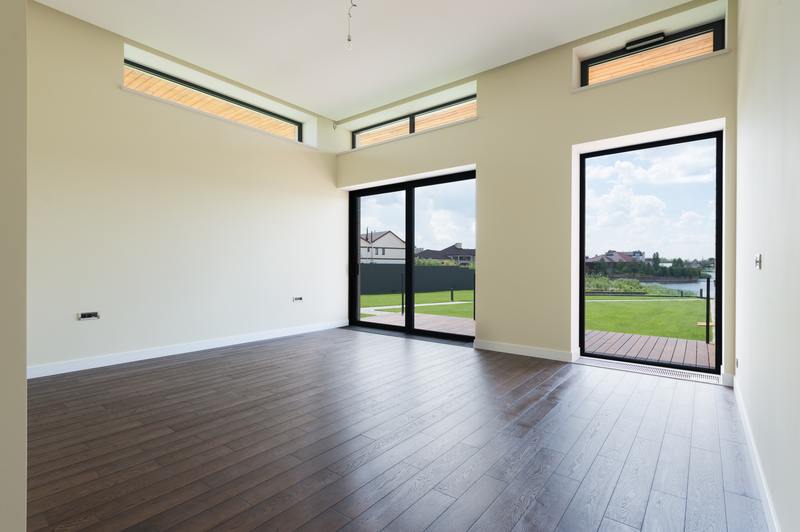Water can undeniably degrade the wood elements used in laminate floors. Don’t worry, because we’ll discuss how to repair water damaged soft floating floor.
Laminate flooring is built to last for years with little maintenance. Water and laminate flooring, on the other hand, have a tangled relationship. Hang in there because this article will give all the facts & hacks!

Fixing Water Damaged Soft Floating Floors
If fitted according to the manufacturer’s recommendations, laminate is meant to withstand minor spills. Direct water damage from shoddy or unprofessional installations is a different story, and it may cost you a lot of money.
When a laminate becomes supersaturated with water, it begins to absorb the moisture, breaking down the laminate’s composition. Plumbing leaks, wet mopping, and liquid spills cause a slew of issues in the long run. If you leave some planks unattended, they will buckle or bend in strange ways.
Step #1. Make sure to contain the water source
It’s pointless to repair your laminate floor if it’ll merely get damaged again. Determine the source of the flooding or leaks and fix it. By deferring your laminate floor repair until the flooding or leaking has stopped, you will prevent your floor from being waterlogged in the future.
Step #2. Examine the locking system for any damaged plans
You will be able to ascertain the regions that have been devastated by doing so. This stage should be simple, but it will demand your complete focus. Check for warping and bubbles, and make a comprehensive assessment.
Depending on the severity of the damage, mark the afflicted areas with a marker pen or sticky notes. In this manner, you can rapidly assess the extent of the damage and take proper action.
Step #3. Gather the appropriate tools
Safety glasses, putty knife, utility knife, flooring adhesive, measuring tape, cleaning solvent, pliers, hammer, and replacement underlayment material are among the tools you’ll need for the project. We suggest replacing your laminate planks with new ones that match your current flooring.
Because matching laminates are difficult to come by, many homeowners choose to replace the entire floor rather than just the damaged area. By having the materials specified available ahead of time, you can avoid last-minute treks to the flooring store.
Step #4. Remove the laminate
This task will necessitate the use of the appropriate tools. You can employ an expert if you don’t want to invest money in new equipment. Perform a background check on any technician or flooring firm you are considering hiring.
If you want to do it yourself, carefully pry up the damaged planks with a putty knife beneath the broken edges. Even if only a tiny section of the plank is damaged, you must discard the entire board because each plank is a single entity.
Remove the planks and baseboard to reveal the bare floor beneath. Seek any signs of mold or mildew on the sub-flooring. Reinstall the popped-up planks if you don’t see any damage.
Step #5. Replace the water-damaged planks
Replacing the damaged planks could be the most challenging task. Make sure you use the same laminate planks that you’ve already installed. If you didn’t buy extra planks when you first installed them, finding exact replacements might be difficult, as you’ll soon discover.
It is best to buy from the same manufacturer or laminate flooring dealer, or at the very least select a good alternative that will balance nicely to avoid replacing the entire floor. Remove any moldings before replacing the flooring.
Step #6. Reinstall the flooring
Keep in mind to match any laminate flooring designs as precisely as feasible. Apply enough adhesive to your new laminate and set a heavy object on it. Allow some time for the floorings to dry completely before using it if you’re placing it in a wet place like the bathroom.
Seeking Professional Help
Repairing laminate flooring that has been soaked in water takes a long time, and if you don’t know what you’re doing, you’ll end up doing additional damage to your laminate floor. You should be aware that help is available from experts in your time of need.
You can employ a professional to assist you with the repairs. They can locate the root of the issue and replace your flooring with skill.
You won’t have to do it yourself, and you won’t have to worry about things going wrong during the installation. You merely need to hire professionals, and they will promptly resolve your problem.
Conclusion
Even without the assistance of professionals, it is possible to repair a laminate floor. You may replace the laminate flooring on your own if you have the time and know how to install laminate flooring. You won’t have any problems with your laminate floor if you follow all of the above suggestions.
If ever you plan to replace your laminate floor, make sure to get additional planks, so you don’t need to look for replacements if the flooring develops another issue. Hopefully, this article on how to repair water damaged soft floating floor gave you everything you need to know!
